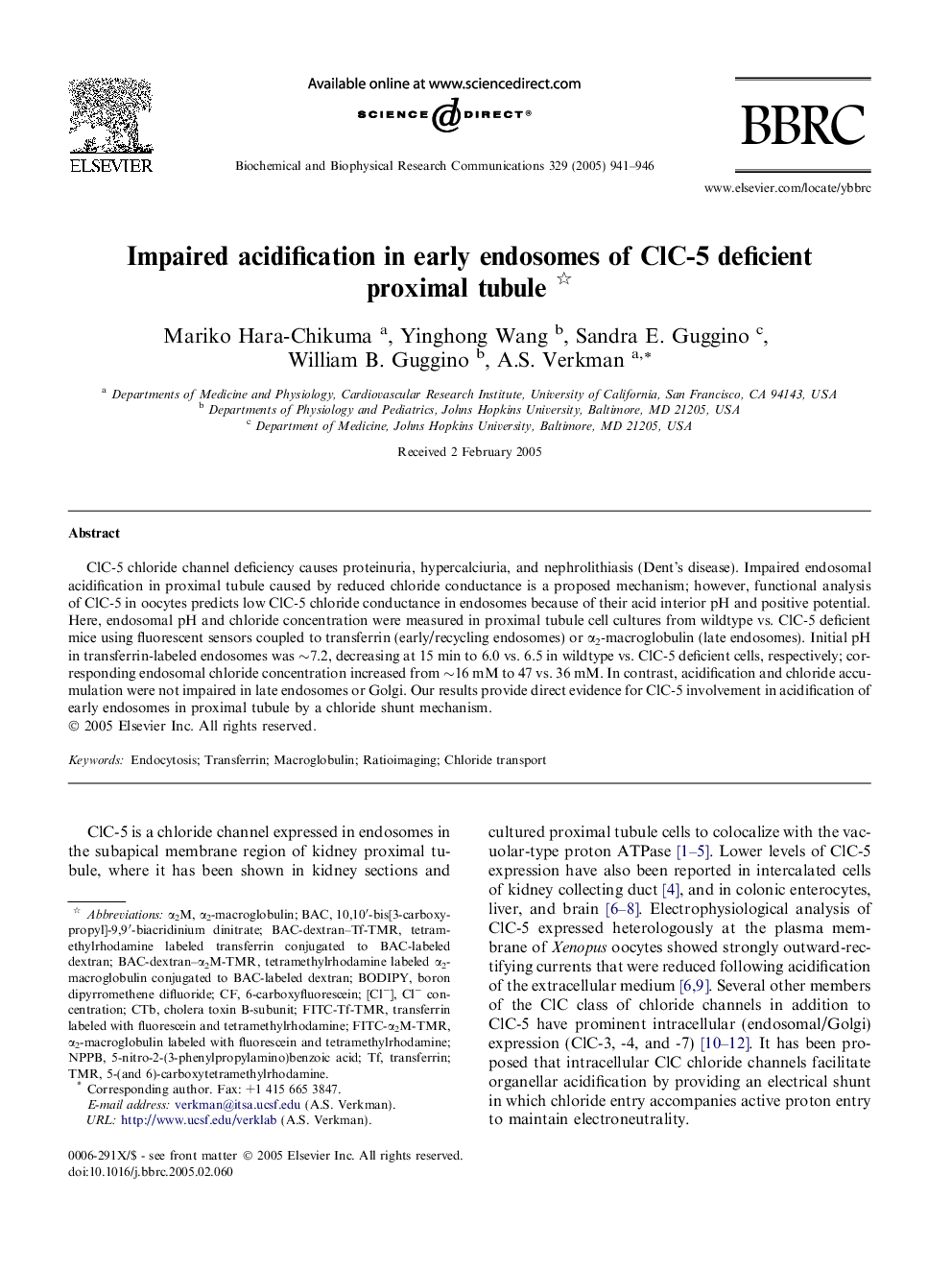| Article ID | Journal | Published Year | Pages | File Type |
|---|---|---|---|---|
| 10771080 | Biochemical and Biophysical Research Communications | 2005 | 6 Pages |
Abstract
ClC-5 chloride channel deficiency causes proteinuria, hypercalciuria, and nephrolithiasis (Dent's disease). Impaired endosomal acidification in proximal tubule caused by reduced chloride conductance is a proposed mechanism; however, functional analysis of ClC-5 in oocytes predicts low ClC-5 chloride conductance in endosomes because of their acid interior pH and positive potential. Here, endosomal pH and chloride concentration were measured in proximal tubule cell cultures from wildtype vs. ClC-5 deficient mice using fluorescent sensors coupled to transferrin (early/recycling endosomes) or α2-macroglobulin (late endosomes). Initial pH in transferrin-labeled endosomes was â¼7.2, decreasing at 15 min to 6.0 vs. 6.5 in wildtype vs. ClC-5 deficient cells, respectively; corresponding endosomal chloride concentration increased from â¼16 mM to 47 vs. 36 mM. In contrast, acidification and chloride accumulation were not impaired in late endosomes or Golgi. Our results provide direct evidence for ClC-5 involvement in acidification of early endosomes in proximal tubule by a chloride shunt mechanism.
Related Topics
Life Sciences
Biochemistry, Genetics and Molecular Biology
Biochemistry
Authors
Mariko Hara-Chikuma, Yinghong Wang, Sandra E. Guggino, William B. Guggino, A.S. Verkman,
